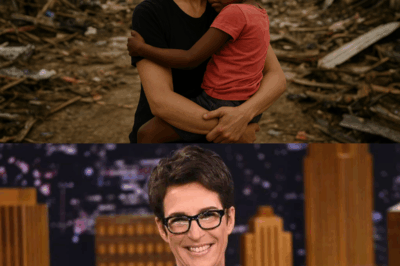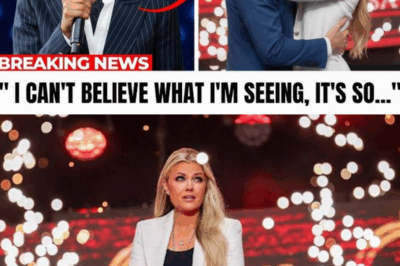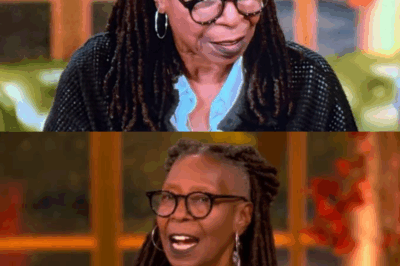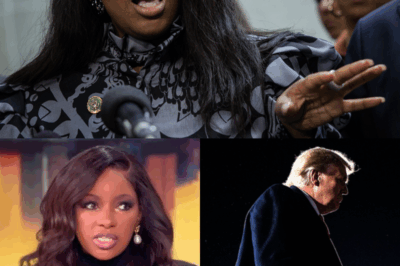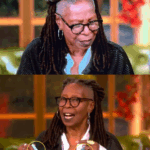Kamala Harris, the sitting Vice President of the United States, has long been a controversial figure in American politics. Her tenure has been marked by missteps, awkward public appearances, and a seeming inability to connect with the electorate.
While political stumbles are not uncommon, Harris’s recent appearance on MSNBC’s Rachel Maddow Show highlights a deeper issue—not just with her political acumen, but with the legacy media’s ability to prop up figures in the Democratic Party.
Harris’s performance on what should have been friendly territory was widely seen as a failure, raising questions about her future political prospects and the broader credibility of media outlets like MSNBC and CNN.

The Role of Legacy Media in Political Narratives
Legacy media outlets such as MSNBC and CNN have historically played a crucial role in shaping political narratives.
These networks often act as gatekeepers, amplifying certain voices while sidelining others.
For decades, their influence has been undeniable, helping to craft the public personas of politicians and steer political discourse.
However, the media landscape has shifted dramatically in recent years, with the rise of alternative platforms and social media challenging their dominance.
This shift has exposed weaknesses in the legacy media’s approach, particularly when it comes to supporting political figures who struggle to resonate with the public.
Kamala Harris’s appearance on The Rachel Maddow Show was a perfect example of this dynamic.
Maddow, one of MSNBC’s most prominent anchors, has a reputation for being fiercely loyal to Democratic leaders.
Her show, which airs only once a week, is typically a safe haven for Democrats looking to boost their image.
Yet, even Maddow couldn’t salvage Harris’s performance, which was widely criticized for its lack of coherence and substance.
Kamala Harris’s Struggles
Kamala Harris’s political career has been marked by highs and lows.
As a former prosecutor, U.S. senator, and now vice president, Harris has achieved historic milestones, becoming the first woman, first Black woman, and first South Asian woman to hold the office of Vice President.
Despite these achievements, Harris has consistently struggled to connect with voters.
Her approval ratings have remained low throughout her tenure, and her public appearances often generate more ridicule than support.
On The Rachel Maddow Show, Harris faced questions about her decision-making process during the 2020 election, particularly regarding her choice of running mate.
When asked why she didn’t select Pete Buttigieg, the former Secretary of Transportation, Harris’s response was widely criticized.
She suggested that Buttigieg’s sexual orientation could have been perceived as a risk in the high-stakes election against Donald Trump.
While Harris attempted to clarify her remarks, the damage was done.
Her comments were seen as tone-deaf and inconsistent with the inclusive values she claims to champion.
This was not the only moment of awkwardness during the interview.
Harris’s attempts to address other topics, such as Antifa and domestic extremism, were equally unimpressive.
Her reliance on prepared notes and inability to articulate coherent responses reinforced the perception that she is ill-equipped for the challenges of national leadership.
The Media’s Role in Harris’s Narrative
Harris’s struggles on The Rachel Maddow Show are emblematic of a larger issue within the legacy media.
Networks like MSNBC and CNN have long been criticized for their biased coverage, particularly when it comes to Democratic politicians.
These outlets often act as cheerleaders for the party, providing a platform for figures like Harris to promote their agendas without facing significant scrutiny.
However, this approach has its limits. When politicians fail to perform even in friendly environments, the media’s ability to protect them diminishes.
Harris’s appearance on Maddow’s show was intended to be a puff piece—a chance to boost her image ahead of the upcoming midterms and position her as a leader within the Democratic Party.
Instead, it exposed her weaknesses and highlighted the media’s inability to shield her from criticism.
The Decline of Legacy Media
The struggles of Kamala Harris and the legacy media are intertwined. As alternative platforms like YouTube, Rumble, and independent news websites continue to grow, traditional networks are losing their grip on public discourse.
This decline is particularly evident in their ratings. MSNBC and CNN have seen significant drops in viewership over the past decade, with many Americans turning to alternative sources for news and analysis.
This shift has forced legacy media outlets to adapt, often by doubling down on partisan narratives. While this approach may appeal to their core audience, it alienates others and undermines their credibility.
Harris’s appearance on The Rachel Maddow Show was a microcosm of this dynamic.
The network’s attempt to present Harris as a competent and inspiring leader fell flat, revealing the limitations of their narrative-building strategy.
Kamala Harris’s Future
The question now is what the future holds for Kamala Harris.
Her approval ratings and public perception suggest that she faces an uphill battle if she intends to run for president in 2028.
While some have speculated that Harris may pivot to a gubernatorial run in California, even this path would not be without challenges.
California’s political landscape is increasingly competitive, and Harris’s inability to connect with voters could hinder her prospects.
Harris’s struggles also raise broader questions about the Democratic Party’s leadership.
As the party looks ahead to the next election cycle, it must grapple with the fact that many of its most prominent figures, including Harris, are struggling to resonate with the electorate.
This leadership vacuum is compounded by the party’s reliance on legacy media outlets that are increasingly out of touch with the public.
The Broader Implications
Kamala Harris’s appearance on The Rachel Maddow Show is more than just a political misstep—it is a reflection of the broader challenges facing the Democratic Party and the legacy media. Both are struggling to adapt to a rapidly changing landscape, where traditional strategies are no longer effective. Politicians like Harris can no longer rely on friendly media coverage to boost their image, and networks like MSNBC and CNN can no longer assume that their narratives will go unchallenged.
The rise of alternative platforms has given the public more options than ever before, forcing politicians and media outlets to compete in a more diverse and dynamic marketplace. This shift has exposed weaknesses in both Harris’s leadership and the media’s ability to shape public opinion. As the Democratic Party looks ahead to the midterms and beyond, it must confront these challenges head-on, or risk losing its grip on power.
Conclusion
Kamala Harris’s struggles on The Rachel Maddow Show highlight the limitations of legacy media and the challenges facing the Democratic Party. While Harris’s historic achievements are undeniable, her inability to connect with voters and articulate coherent responses raises questions about her future in politics. At the same time, the decline of networks like MSNBC and CNN underscores the need for a more balanced and inclusive approach to political coverage.
As the media landscape continues to evolve, politicians and networks alike must adapt to the changing dynamics of public discourse. For Harris, this means finding a way to rebuild her image and connect with the electorate. For the legacy media, it means reevaluating their role in shaping political narratives and regaining the trust of their audience. The stakes are high, and the clock is ticking. Whether Harris and the legacy media can rise to the challenge remains to be seen—but one thing is certain: the status quo is no longer sustainable.
News
💔 “SHE DIDN’T PLAN TO BE A HERO — SHE JUST COULDN’T WALK AWAY.” 🌧️ When Rachel Maddow landed in Jamaica to cover the aftermath of Hurricane Melissa, she expected devastation. What she didn’t expect… was her. A little girl, barefoot in the wreckage, clutching a soaked teddy bear and whispering one word: “Mama.” Reporters looked away. Cameras kept rolling. But Maddow — silent, trembling — stepped forward. That night, she stayed. Days later, she signed the papers that changed both their lives forever. Now, as the world reacts to her unexpected act of love, one haunting question remains: Was this journalism… or destiny?|KF
1. The Storm That Took Everything The storm had no mercy. Hurricane Melissa tore through Jamaica with winds that howled…
😱 “NO CAMERAS. NO PRESS. JUST ACTION.” 💥 When Hurricane Melissa left Jamaica in ruins, everyone expected statements — not silence. But that night, Rep. Jasmine Crockett made a call no one knew about. Hours later, a private shipment — blankets, medicine, and water filters worth $500,000 — quietly left U.S. soil. No press release. No credit. Just a note inside the first box that made rescuers burst into tears. Now, the world wants to know: what did she write?|KF
When Hurricane Melissa finally loosened its grip on Jamaica, what remained was not silence but the faint hum of survival…
💥 “THE TAPES WERE NEVER MEANT TO LEAVE THE BUILDING.” 😳 A Turning Point USA insider has come forward — and what they just leaked about Erika Kirk and the Chief of Staff is sending shockwaves through conservative media. Behind closed doors, secret recordings. Late-night meetings. Deleted emails that someone thought were gone forever. And now, the story is unraveling — faster than anyone can contain it. The insider’s confession doesn’t just expose one scandal… it hints at a network of cover-ups stretching far beyond TPUSA. 👀 Either way, the receipts are coming — and they could change everything. 👉 Full leaked details in the comments (CMT) before they disappear… 🔥👇👇|KF
Late last night, an anonymous insider from Turning Point USA (TPUSA) dropped a bombshell that has sent shockwaves through conservative…
“LIVE MELTDOWN ON NATIONAL TV” — WHOOPI GOLDBERG’S EXPLOSIVE MOMENT LEAVES ‘THE VIEW’ IN CHAOS 😱💥 It started like any other morning at The View. Laughter. Headlines. Controlled chaos. Then — a single note changed everything. As producers slipped Whoopi Goldberg a message mid-segment, cameras caught something no one was supposed to see. With a glare sharper than a knife, she snatched the paper, ripped it to pieces, and tossed it aside — live, unedited, and on national television. The studio froze. Her co-hosts went silent. Viewers at home could feel it — that thick, electric tension pulsing through the screen|KF
Inside Whoopi Goldberg’s Live Meltdown — and the Crisis Shaking Disney’s Daytime Empire It started with a folded piece of…
💥 “NO CAMERAS. NO PRESS. JUST THREE NAMES THE WORLD THOUGHT THEY KNEW.” 🌪️ When the Category-5 monster Hurricane Melissa tore through Jamaica, help was nowhere in sight. Then — without a single announcement — a private jet touched down at dawn. Inside: Rachel Maddow. Stephen Colbert. Joy Reid. No sponsors. No cameras. No entourage. They brought 5 tons of food, medicine, water filters, and $1.5 million in aid, all paid from their own pockets. Locals said they worked through the night — lifting boxes, feeding children, treating wounds — not a single word about fame or press. And when a volunteer asked why they came, Joy Reid quietly answered: “Because the news doesn’t need to cover this — humanity does.” By morning, they were gone. No selfies. No headlines. Just whispers spreading across the island — “Were those really them?” Nobody knows who leaked the flight manifest. But one thing’s certain: this wasn’t charity. This was rebellion — against the silence of comfort. 🕯🌎 👇 Full uncovered story before it disappears…|KF
No cameras. No sponsors. Just three journalists who decided to act, not speak. When Hurricane Melissa struck Jamaica — the…
End of content
No more pages to load



